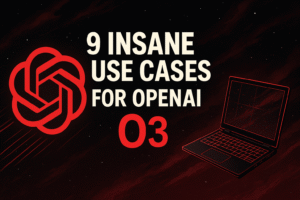Introduction
The world of artificial intelligence is evolving at an unprecedented pace, and the latest advancements in AI-driven video generation are set to revolutionize the entertainment industry. Leading this transformation is a new AI model known as Kling Ai, showcasing remarkable capabilities that could redefine the landscape of video creation and filmmaking.
What is Kling Ai?
Kling Ai is an advanced AI video generation model that pushes the boundaries of what’s possible in digital content creation. By leveraging cutting-edge algorithms and machine learning techniques, it offers users an array of powerful tools to create, edit, and manipulate videos with ease and precision.
Revolutionary Features
Video Inpainting
One of the standout features of Kling Ai is its video inpainting technology. This innovative tool allows users to:
- Select Objects: Choose any object within a video frame.
- Specify Actions: Indicate the desired action or transformation.
- Animate Seamlessly: The AI animates the object, producing fluid and realistic motion that aligns with user instructions.
This capability opens up a myriad of creative possibilities for content creators, filmmakers, and advertisers, enabling them to bring their visions to life without the need for complex equipment or extensive editing skills.
Enhanced Food Representation
Historically, AI models have struggled with accurately depicting food items, especially those that change form during consumption, like spaghetti or noodles. Kling Ai demonstrates significant improvement in this area by:
- Maintaining Visual Coherence: Accurately representing food as it’s being consumed.
- Handling Complex Textures: Dealing effectively with the intricate details of various food items.
- Improving Consistency: Providing a consistent visual experience throughout the video.
These advancements have substantial implications for culinary arts, food advertising, and related visual media sectors.
Improved Motion and Action Sequences
Motion and action shots often present challenges for AI video generation, leading to blurriness or unnatural transitions. Kling Ai addresses these issues by:
- Enhanced Algorithms: Utilizing advanced algorithms for smoother action sequences.
- Dynamic Rendering: Producing more dynamic and realistic movements.
- Professional Quality: Bringing AI-generated videos closer to professional filmmaking standards.
While minor imperfections may still exist, the overall quality represents a significant leap forward in AI video technology.
Creating the Unimaginable
Kling Ai’s ability to handle unconventional and imaginative scenarios sets it apart from previous AI models. Examples include:
- Surreal Scenes: Generating footage of fantastical events, like a dinosaur interacting with people.
- Blurring Realities: Creating visual effects that merge different objects, such as transforming apples into other entities.
- Engaging Narratives: Constructing believable and captivating stories through AI-generated visuals.
This capacity to produce imaginative content can inspire new genres of art and storytelling, expanding the horizons of what’s possible in digital media.
Implications for the Film Industry
The advancements demonstrated by Kling Ai raise profound questions about the future of filmmaking and content creation:
- Democratization of Filmmaking: As AI video generation becomes more accessible, independent creators can produce high-quality content without extensive resources.
- Competition with Studios: Small studios and individual creators may rival large production companies, leading to a more diverse and competitive industry.
- Innovation in Storytelling: New tools enable creators to explore innovative storytelling techniques and genres.
Traditional barriers are diminishing, and the film industry must adapt to embrace these technological changes.
The Future of Content Creation
Short films and projects generated using Kling Ai highlight the potential shift in content creation dynamics:
- Technical Prowess: Showcasing the advanced capabilities of AI in producing professional-grade videos.
- Emotional Engagement: Demonstrating AI’s ability to evoke emotional responses from audiences.
- Diverse Content: Encouraging a surge in varied and innovative content due to lowered entry barriers.
The democratization of video production tools could lead to a renaissance in creative expression across various media platforms.
Conclusion
The emergence of Kling Ai marks a pivotal moment in AI video generation, with far-reaching implications for creators and consumers alike. As technology continues to advance, we may witness a new era where imagination is the only limit to what can be brought to the screen. The film industry and other sectors reliant on visual media will need to adapt, embracing the opportunities that AI presents while addressing the challenges it poses.







